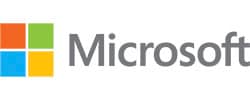August 02, 2024
How Data Center Optimization Unlocks Digital Services
For state and local government agencies, the path to better citizen services starts with modernizing data center infrastructure.
Citizens and business leaders now expect state and local government agencies to offer intuitive, convenient digital experiences. But for many governments, legacy data center infrastructure poses a significant hurdle to digital services. Data center optimization efforts can lay the foundation for more modernized operations.
In addition to budget constraints, IT and mission leaders must consider data management and security concerns, the need to consolidate facilities, difficulties with recruiting and retaining top technology talent, and the importance of getting buy-in from elected leaders. A strategic approach that accounts for financing and ongoing support will help keep optimization efforts on track and prevent critical mistakes.
For many organizations, tools and services such as hybrid cloud infrastructure, automation, app modernization and third-party advisory services play a critical role in data center optimization.
CDW Government can help your agency achieve digital transformation to deliver improved services.
Citizens and business leaders now expect state and local government agencies to offer intuitive, convenient digital experiences. But for many governments, legacy data center infrastructure poses a significant hurdle to digital services. Data center optimization efforts can lay the foundation for more modernized operations.
In addition to budget constraints, IT and mission leaders must consider data management and security concerns, the need to consolidate facilities, difficulties with recruiting and retaining top technology talent, and the importance of getting buy-in from elected leaders. A strategic approach that accounts for financing and ongoing support will help keep optimization efforts on track and prevent critical mistakes.
For many organizations, tools and services such as hybrid cloud infrastructure, automation, app modernization and third-party advisory services play a critical role in data center optimization.
CDW Government can help your agency achieve
digital transformation to deliver improved services.

In state and local government, digital services have become synonymous with citizen services.
Residents, taxpayers and business stakeholders have come to expect government agencies to provide the same seamless, intuitive digital experiences they receive from the private sector in their daily lives as consumers. They want to pay their bills, request records and apply for permits online or via mobile apps, with nearly zero downtime or latency. At the same time, embracing digital services can help governments combat staffing shortages, prevent errors associated with manual workflows, streamline regulatory compliance and increase efficiency.
However, efforts to improve and expand digital services are often held back by legacy IT infrastructure. To provide their citizens with a truly modern experience, governments must implement Internet of Things sensors and devices, embrace ambitious app modernization programs that update antiquated software, deploy advanced cybersecurity solutions, and ensure that their digital resources are always accessible. This, in turn, requires modernized data center infrastructure that is optimized to meet today’s goals rather than yesterday’s challenges.
As they modernize their data centers, IT leaders must consider the role of emerging technologies such as artificial intelligence.
40%
The percentage of those surveyed that have established a state technology modernization fund to support legacy systems modernization efforts
Source: National Association of State Chief Information Officers, The 2023 State CIO Survey, September 2023
State and local governments have largely avoided the rush to rapidly implement AI, which provides them an opportunity to build from the lessons learned by private sector early adopters and implement only those solutions that are likely to create real value. Agencies can notch early wins with proven use cases such as chatbots, automated document intake and management, and AI features that eliminate manual tracking processes for billing systems.
Budgets, politics and institutional inertia all present formidable hurdles for government IT leaders looking to modernize their data centers. Often, technology is still considered a cost center rather than a mission enabler, and political administrations may be unwilling to devote significant resources to IT initiatives that will not be fully implemented until the end of their terms. Additionally, long-tenured employees may be reluctant to learn how to use and maintain new systems. Still, it is important for IT leaders to make the case that data center modernization will help governments save money over the long term, enable greater security with a smaller footprint and ultimately achieve their missions more effectively.
CDW Government can help your agency optimize
its data center infrastructure to meet today’s goals.
In state and local government, digital services have become synonymous with citizen services.
Residents, taxpayers and business stakeholders have come to expect government agencies to provide the same seamless, intuitive digital experiences they receive from the private sector in their daily lives as consumers. They want to pay their bills, request records and apply for permits online or via mobile apps, with nearly zero downtime or latency. At the same time, embracing digital services can help governments combat staffing shortages, prevent errors associated with manual workflows, streamline regulatory compliance and increase efficiency.
However, efforts to improve and expand digital services are often held back by legacy IT infrastructure. To provide their citizens with a truly modern experience, governments must implement Internet of Things sensors and devices, embrace ambitious app modernization programs that update antiquated software, deploy advanced cybersecurity solutions, and ensure that their digital resources are always accessible. This, in turn, requires modernized data center infrastructure that is optimized to meet today’s goals rather than yesterday’s challenges.
As they modernize their data centers, IT leaders must consider the role of emerging technologies such as artificial intelligence. State and local governments have largely avoided the rush to rapidly implement AI, which provides them an opportunity to build from the lessons learned by private sector early adopters and implement only those solutions that are likely to create real value. Agencies can notch early wins with proven use cases such as chatbots, automated document intake and management, and AI features that eliminate manual tracking processes for billing systems.
Budgets, politics and institutional inertia all present formidable hurdles for government IT leaders looking to modernize their data centers. Often, technology is still considered a cost center rather than a mission enabler, and political administrations may be unwilling to devote significant resources to IT initiatives that will not be fully implemented until the end of their terms. Additionally, long-tenured employees may be reluctant to learn how to use and maintain new systems. Still, it is important for IT leaders to make the case that data center modernization will help governments save money over the long term, enable greater security with a smaller footprint and ultimately achieve their missions more effectively.
40%
The percentage of those surveyed that have established a state technology modernization fund to support
Source: National Association of State Chief Information Officers, The 2023 State CIO Survey, September 2023
CDW Government can help your agency optimize
its data center infrastructure to meet today’s goals.
Guiding Legacy Modernization
According to the 2023 State CIO Survey from the National Association of State Chief Information Officers, more than half of states have formal steering committees or third-party validation in place to guide their modernization efforts. However, nearly one-quarter of states lack a statewide modernization strategy.
From the survey: What type of governance, guidelines and/or policies does your CIO organization have in place for legacy systems modernization efforts?
63%
Formal IT project review board or steering committee
Source: National Association of State Chief Information Officers, The 2023 State CIO Survey, September 2023
52%
Independent third-party to provide validation and verification for large systems efforts
Source: National Association of State Chief Information Officers, The 2023 State CIO Survey, September 2023
50%
Statewide enterprise architecture standards for software solutions
Source: National Association of State Chief Information Officers, The 2023 State CIO Survey, September 2023
Guiding Legacy Modernization
According to the 2023 State CIO Survey from the National Association of State Chief Information Officers, more than half of states have formal steering committees or third-party validation in place to guide their modernization efforts. However, nearly one-quarter of states lack a statewide modernization strategy.
From the survey: What type of governance, guidelines and/or policies does your CIO organization have in place for legacy systems modernization efforts?
63%
Formal IT project review board or steering committee
Source: National Association of State Chief Information Officers, The 2023 State CIO Survey, September 2023
52%
Independent third-party to provide validation and verification for large systems efforts
Source: National Association of State Chief Information Officers, The 2023 State CIO Survey, September 2023
50%
Statewide enterprise architecture standards for software solutions
Source: National Association of State Chief Information Officers, The 2023 State CIO Survey, September 2023
- OPTIMIZATION CHALLENGES
- OPTIMIZATION STRATEGIES
- OPTIMIZATION SOLUTIONS
While the data center optimization challenges facing state and local governments can be daunting, the right mix of solutions can help agencies modernize their infrastructure and processes.
MODERNIZATION AND CONSOLIDATION: Even after years of consolidation efforts, many state and local governments are still looking to minimize the number of physical data centers they run. At the same time, they are racing to enhance, renovate and replace legacy platforms and applications before technical debt creates performance or security problems.
DATA MANAGEMENT AND SECURITY: The challenges in collecting and managing data are many: data governance, data architecture, master data management, open data, sustained access to government data, data portals, enhancing the role of data throughout the organization, data integration and data strategy, just to scratch the surface. And, of course, government agencies must protect the sensitive personal information that makes them prime targets for cybercriminals.
WORKFORCE LIMITATIONS: It is no exaggeration to say that the ability to establish and maintain an effective IT staff is the most essential component of a CIO’s success. But government agencies often have relatively small, overburdened IT staffs, and they typically lack the financial resources to add and retain skilled professionals for their teams.
ELECTED LEADERSHIP: Buy-in from leadership is critical to the success of any IT initiative. In government, political appointees may not fully understand the needs of agencies and their IT operations. Further, following each election cycle, new leaders may abruptly make changes to the initiatives of the previous administration.
Click Below to Continue Reading
Optimizing with IT as a Service
State and local governments often must maintain technology environments with relatively small IT teams, making technology offerings delivered as a service an attractive option for closing skills gaps and accelerating data center optimization efforts.
BaaS and DRaaS: Backup as a Service and Disaster Recovery as a Service both allow government agencies to get back up and running quickly after cyber breaches, natural disasters or other outage-causing events.
IaaS: Infrastructure as a Service gives agencies access to on-demand servers and storage in the public cloud. In addition to eliminating the maintenance burden associated with on-premises IT, cloud infrastructure allows governments to rapidly spin up or scale down resources in response to changing demands.
DCaaS: A more holistic offering, Data Center as a Service allows governments to remotely access a provider’s storage, server and networking resources through a WAN. This is an attractive option for organizations with outdated physical space or other drivers incentivizing a move away from on-premises data centers.
Too often, data centers are modernized in an ad hoc manner. Rather than crafting a deliberate strategy to guide their efforts, organizations may simply replace equipment when they have the funds — or, worse, when outdated infrastructure is already causing performance or security problems. Instead, state and local government IT leaders should identify their desired outcomes and then map out the path that will get their organizations where they need to be.
As they strategize their data center optimization initiatives, state and local government IT leaders should keep these important considerations in mind.
Strategic Financing: Government agencies often have unique budgeting considerations, and it is important for internal teams and external partners to take these into account when mapping out a data center optimization strategy. For instance, some governments may allocate capital funds to agencies once every several years or rely on public bond votes to secure the resources needed for infrastructure upgrades. In this case, IT leaders may prefer a capital expenditure financing model because they can’t be sure of the reliability of funding in the out years. By contrast, agencies with more predictable yearly funding may be more likely to opt for an operating expenditure model to finance upgrades.
IT Support: Ongoing support for IT infrastructure is an important part of asset lifecycle management. Rather than waiting for problems to pop up, government agencies should take a proactive stance, planning out how they intend to manage and maintain their data center equipment over time. For this reason, extended support contracts can be particularly valuable to state and local governments, as these allow agencies to continue to support their legacy equipment with additional warranty coverage after the initial coverage period passes. For agencies that are unable to secure funds for equipment upgrades, extended IT support allows them to squeeze more life out of their infrastructure.
Click Below to Continue Reading
Strategic Planning: Many state and local government agencies turn to trusted third-party partners such as CDW Government for help with planning their data center upgrades and other strategic IT initiatives. This is partly because partners often have more experience with such planning than internal staffers, having worked with countless other organizations to help them achieve a wide range of objectives. Government IT leaders can also use the endorsement of a third-party partner to validate long-term strategies in the eyes of elected leaders and political appointees, who might otherwise be inclined to change course to achieve short-term financial and policy objectives.
Managed Services: Managed services is another area where third-party partners can deliver value for overburdened government IT staffs. Offerings range from DCaaS (where partners essentially take over all aspects of data center management) to more limited engagements such a IaaS or Backup as a Service. While as a service models may be particularly attractive for certain government agencies, they are also being adopted across industries. Gartner predicts that by 2025, 40% of newly procured on-premises computing and storage will be consumed as a service — up from less than 10% in 2021.
Any effective data center optimization effort relies on a wide range of solutions and services, including advisory and managed services delivered by trusted third-party partners.
Automation and AI: Automation has become crucial to helping government IT teams reduce their data center management burdens, and the recent rise of AI gives organizations more options for automating routine tasks. For instance, AI features can help optimize resource allocation by predicting demand and dynamically adjusting workloads.
Data Protection and Storage: Backup and disaster recovery solutions safeguard against data breaches and ransomware attacks that can expose citizens’ and employees’ personal and financial data. This protection also prevents data center downtime, which can severely hamper the citizen experience. A trusted partner can help agencies design storage tiers that meet mission needs in a cost-efficient manner.
Hybrid Cloud: Hybrid cloud models, which incorporate both on-premises data center solutions and public cloud resources, give state and local governments the flexibility to choose the right environment for each workload, helping to optimize resource use and reduce overall costs.
Application Modernization: Legacy applications present a significant barrier to the effective delivery of digital services. Aggressive app modernization efforts can improve performance, security and compatibility with modern IT environments. Updated apps can also support new features and functions, leading to a more responsive and user-friendly experience for citizens and employees alike.
Click Below to Continue Reading
Power and Cooling: Data center modernization initiatives include power and cooling systems for optimizing performance and cost. Effective cooling systems can help governments meet their sustainability goals and prevent data center equipment from overheating, which can lead to hardware failures and downtime. Data centers that support AI solutions and other advanced capabilities also may require enhanced power and cooling solutions such as liquid-cooled racks.
IT Service Management: By implementing and adopting an IT service management platform, government IT departments can stay on top of their tickets, resolve incidents and outages more quickly, and ultimately keep data center infrastructure running at full capacity. The reporting features of ITSM platforms also deliver valuable insights about data center environments.
Advisory and Consulting Services: For overwhelmed government IT departments, advisory and consulting services from a trusted partner such as CDW Government can be crucial to the success of data center optimization initiatives. Such services include comprehensive assessments of current IT infrastructure, the identification of opportunities for improvement and the development and implementation of customized project roadmaps.
Strategic Application Modernization Assessment: Provided by CDW Government, SAMA implements a software tool on an organization’s application environment to identify potential issues around modernization and establish a roadmap for next steps. Similarly, CDW’s Skymap service uses AI to help organizations effectively map out their cloud migration initiatives.
CDW Government solutions and services can help your
agency navigate its modernization and optimization initiatives.
A.J. Lucci Jr., Chris Moran, Rendell Green, Steve Hansen
CDW Experts







